
| Specifications |
| Publisher: Sri Satguru Publications | |
| Author Daya Krishna | |
| Language: English | |
| Pages: 613 | |
| Cover: Hardcover | |
| 9.0 inch x 6.0 inch | |
| Weight 800 gm | |
| Edition: 2006 | |
| ISBN: 9788170308454 | |
| NAE680 |
| Delivery and Return Policies |
| Usually ships in 3 days | |
| Returns and Exchanges accepted within 7 days | |
| Free Delivery |
An earlier collection of some of these articles under the title Indian Philosophy A Counter Perspective was published in 1991. This new collection includes many articles written after that period , some published and others unpublished. The articles included in this book are: Is Indian Philosophy Theological’ in Character? ; Three myths about Indian Philosophy. Three conceptions of Indian Philosophy Indian Philosophy and Moksa Revisiting an old controversy; The Vêdic Corpus : some questions The Vedic Corpus and the two Sutras- text, concerned with it ; the Mimamsa Sutra and the Brahma Sutra ; The Upanisads - What are they? ; The Yoga-Sutras: The undeciphered text anomalies, problems and paradoxes ; Yajna and the doctrine of Karma - A contradiction in Indian thought about action ; Apoha and Samavaya in Kantian Perspective ; The Text of the Nyaya Sutras : Some Problems Prasastapadas mapping of’ the Realm of qualities neglected chapter in Indian philosophy ; Is lsvarakrsna’s Samkhya Karika really Samkhayan ; Vedanta-Does it really mean anything? ; Adhyasa- a non-advaitic beginning in Samkara Vedanta ; The myth of the Purusarthas’; Rasa - The bane of Indian Aesthetics Consciousness , materiality and spirituality : issues ,dilemmas and the future of mankind; Bondage of Birth and death. The book contains annexure and index.
Prof Daya Krishna was formerly Professor of Philosophy, University of Rajasthan and National Fellow of the Indian Council of Philosophical Research He has Written extensively on theoretical issues in Philosophy Sociology, and literature.
The articles in this book, though written over a long period of time, show a common concern with respect to the past philosophical traditions of India. And this is, how to rescue those traditions from the long and varied spiritual quest of India with which they have become associated and entangled due to the diverse exigencies of history from the late eighteenth century to the first half of the twentieth century. The interests of western Indological studies combined with the search for a spiritual self-identity in the face of overwhelming western superiority in all fields of knowledge seemed to have led to the creation of a certain picture of India’s philosophical past which has become fixed in the minds of successive generations of students and teachers, both in India and abroad, through innumerable text-books which render it almost impossible to question the picture or build a different one. To break the picture, its outlines and patterns ad foci, have been the first concern of these articles.
The second task which perhaps is even more important, is to take seriously India’s philosophical past and relate it to the active philosophical concerns of the contemporary philosophical situations in India and abroad. Somehow, the context of contemporary intellectual life in India, even in the field of philosophy, has no relationship with India’s intellectual traditions of the past, but rather with the way these disciplines have developed in the west and the way they are developing there at present. Western thought in all fields of knowledge is rooted in its own past. And, this is as it should be. But the story is not the same with other non-western cultures of the world; for them the living intellectual past is also that of the west, and not that of their own past traditions, even if they were fortunate enough to have one. The past intellectual traditions of these cultures have become a matter of historical curiosity; they have little relationship with the alive intellectual concerns of today. The problem, therefore, is how to break this attitude and re-establish a living continuity with India’s philosophical past to make it relevant to the intellectual concerns of the present.
The third concern is to take a close look at the classical texts of the Indian philosophical traditions with unblinkered eyes. So much seems to be taken for granted even by well known scholars writing on Indian philosophy; yet the moment one starts looking even casually at the evidence, one is amazed how little ground there is for many of these assertions. Questions that leap to one’s mind which appear obvious from looking at even a single page of the text seem not to have been asked, or if asked, seem to have been evaded so cleverly, as if they had not really been felt to be questions or issues at all. The articles on the Vedas, the Upanisads and the Nyaya-sutras are examples of this. Yet, what is perhaps still more amazing is the fact that the evidence amassed in these articles has failed to make the slightest dent in the assertions of those who have had the occasion to know a little closely of their contents. This would not have mattered if the arguments had been controverted, the evidence questioned or the counter-evidence produced. But, by and large, nothing of this kind has happened.
Occasionally, there have been some responses, even attempts at rebuttal, but generally of the most perfunctory kind. In a recent seminar devoted to a discussion of my thought, five papers were presented on what I have written on Indian philosophy. But, except for the paper by Prof. J.N. Mohanty, no one even fried to come to grips with the central conclusions of my papers or the arguments and the evidence presented therein. Karl H. Potter is the only exception, but his response to my detailed critique of the reply he made earlier is so tangential that one begins to wonder if any serious discussion can be held about issues in Indian philosophy with scholar in the field.
The response of the traditional pandits has been no different, though as many of them do not know English, they can hardly be blamed for not doing so. But even when a shorter version of the article entitled ‘The Vedic Corpus: Some Questions’ was presented in Sanskrit to a gathering of the most outstanding Mimamsa scholars at Tirupati, not a single person said anything. Some of the most eminent Nyaya pandits failed to see any problems posed by the text of the Nyayasutroddhara or by the fact that some of the sütras have not only variant readings, but contradictory ones in different versions of the text as given by different authorities. And I am still to find a person, traditional or modern, who has felt any shock at the fact that a portion of the Aitareya Aranyaka, which proclaims itself to be an Upanisad, is not included in the text which calls itself the Aitareya upanisad.
Perhaps the reason for all this is two-fold. One, the articles were written in a piece-meal fashion at long intervals and hence could not make that cumulative and concentrated impact which presumably they should have had. Second, the failure in making any relevant response might lie in the fact that the scholar may not know what to do with the arguments or the evidence marshalled in the articles. Even scholars are so accustomed to see things in a certain way, so habituated to entertain a certain picture of India’s philosophical past that unless it can be replaced by a different picture, mere questioning of that which prevails is bound to be ignored.
The first reason will no longer operate with the availability of most of these articles at one place in this collection. Their ready availability and their mutual interrelatedness should provide a cumulative impact which may prove to be more challenging. At least, I am sure, the need for a relevant reply would be felt by most readers of these articles. I only hope that they translate this need into an actual reply so that 1 may know where I have been mistaken and, if necessary, revise my position. As for the second, I do hope that I will be able to present before interested readers a counter sketch, if not a full picture, of the way I conceive the traditions of philosophizing in India to be. Till then, the reader has to be satisfied with the demolition of the currently accepted picture. In case he agrees with the argument and the evidence he hopefully may try to build his or her own new picture in its place. It would be exciting to see these new pictures, as and when completed. But before that can be done, one has to loosen the stranglehold of the picture that holds us all in its grip. These articles should help in that direction.
| Preface | (VII) | |
| Acknowledgements | (XIII) | |
| Preface to The New Collection of Articles | (XV) | |
| Chapter 1 | Is Indian Philosophy ‘Theological’ in Character9 | 1 |
| Chapter 2 | Three Myths about Indian Philosophy | 18 |
| Chapter 3 | Three Conceptions of Indian Philosophy | 38 |
| Chapter 4 | Indian Philosophy and Moksa Revisiting an Old Controversy | 66 |
| Chapter 5 | The Vedic Corpus Some Questions | 103 |
| Chapter 6 | The Vedic Corpus and the two Sutra-Text, concerned with it; The Mimamsa Sutra and the Brahma Sutra | 151 |
| Chapter 7 | The Upaniads What are They’? | 181 |
| Chapter 8 | The Yoga-Satras : The Undeciphered Text Anomalies, Problems and Paradoxes | 204 |
| Chapter 9 | Yajna and the Doctrine of Karma—A Contradiction in Indian thought about Action | 224 |
| Chapter 10 | Apoha and Samavaya in Kantian Perspective | 250 |
| Chapter 11 | The Text of the Nyaya-Sutras . Some Problems. | 262 |
| Chapter 12 | Praastapada’s Mapping of the Realm Qualities : A Neglected Chapter in Indian Philosophy | 370 |
| Chapter 13 | Is Ivarakf1a’s Sathkhya— Karika Really Sathkhyan? | 381 |
| Chapter 14 | Vedanta—Does it Really Mean Anything | 407 |
| Chapter 15 | Adhyasa—A Non-Advaitic Beginning in Sarhkara Vedanta | 433 |
| Chapter 16 | The Myth of the Puruflrthas | 509 |
| Chapter 17 | Rasa—The Bane of Indian Aesthetics | 529 |
| Chapter 18 | Consciousness, Materiality and Spirituality: Issues, Dilemmas and the Future of Mankind | 538 |
| Chapter 19 | Bondage of Birth and Death: Emerging Technologies of Freedom on the Horizon and the Hope of Final Release from the Foundational Bondage of Mankind | 323 |
| Annexure 1 | 338 | |
| Annexure 2 | 357 | |
| Index | 563 |


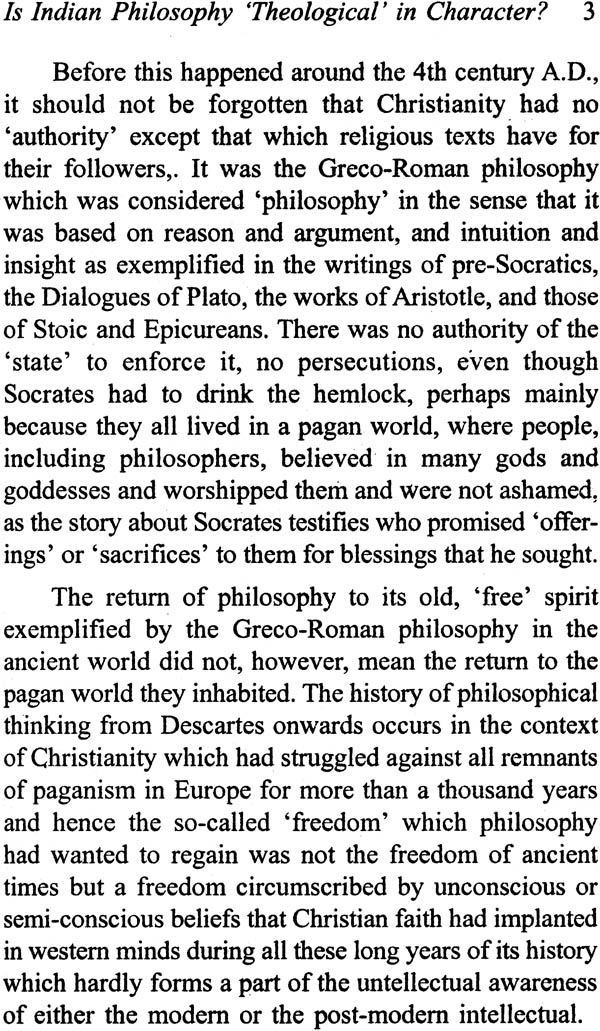
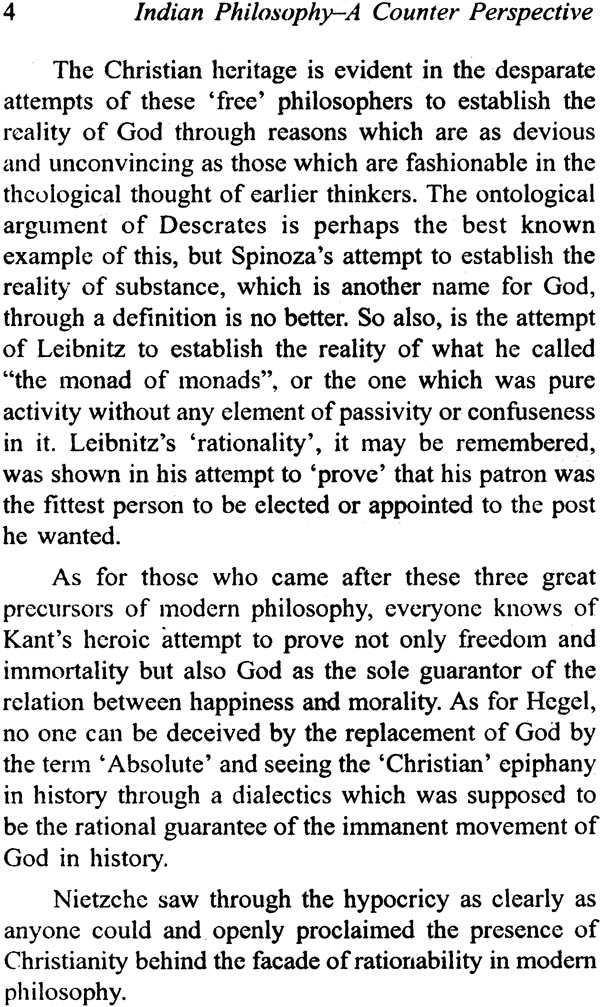
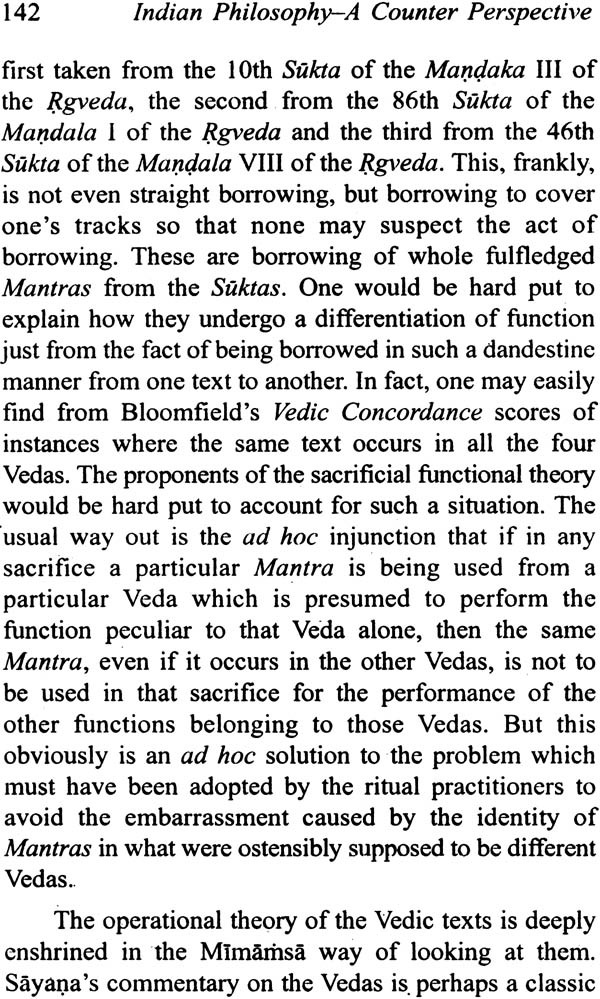
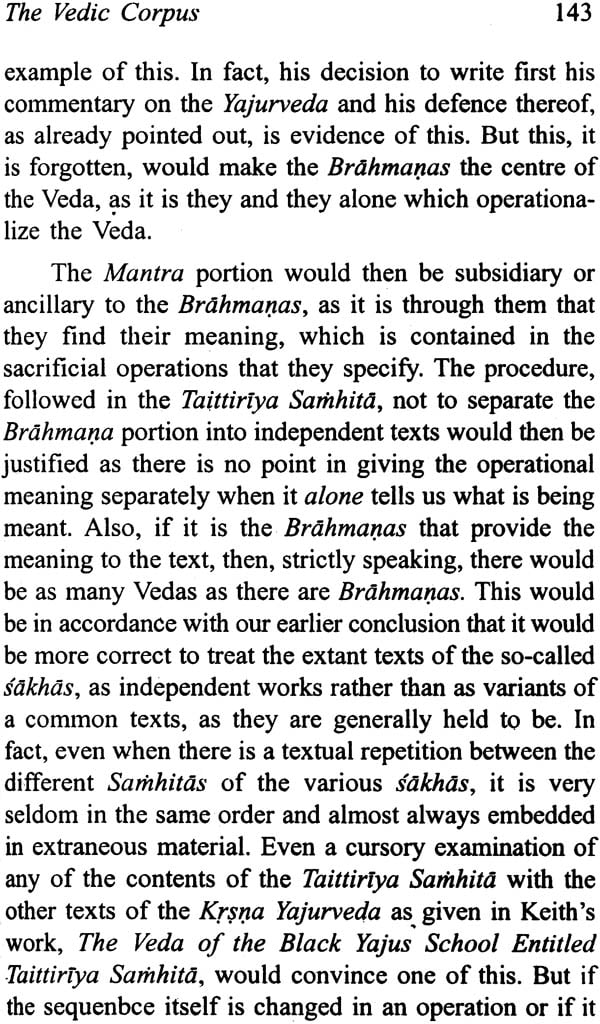
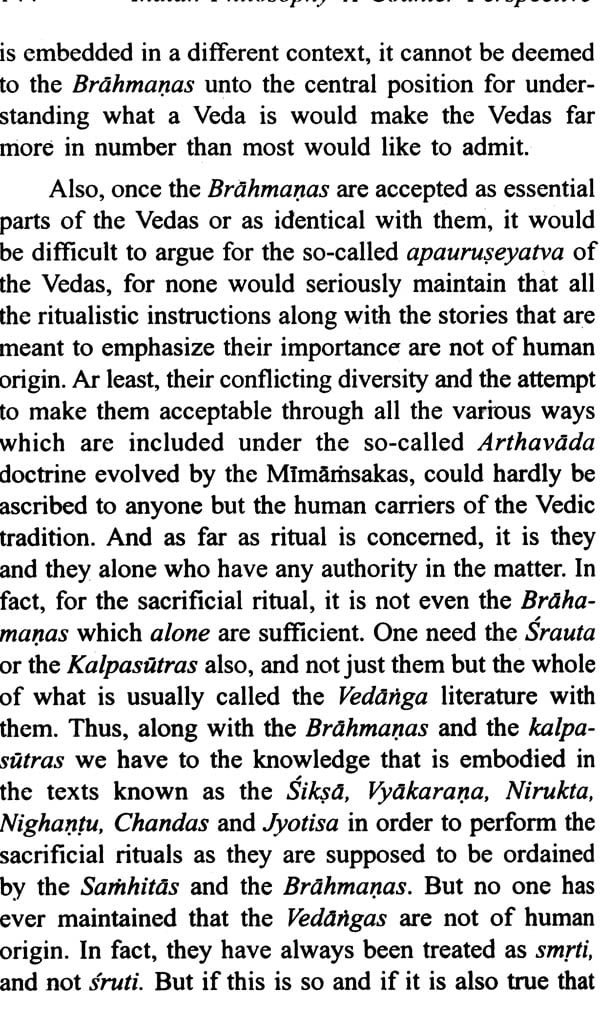
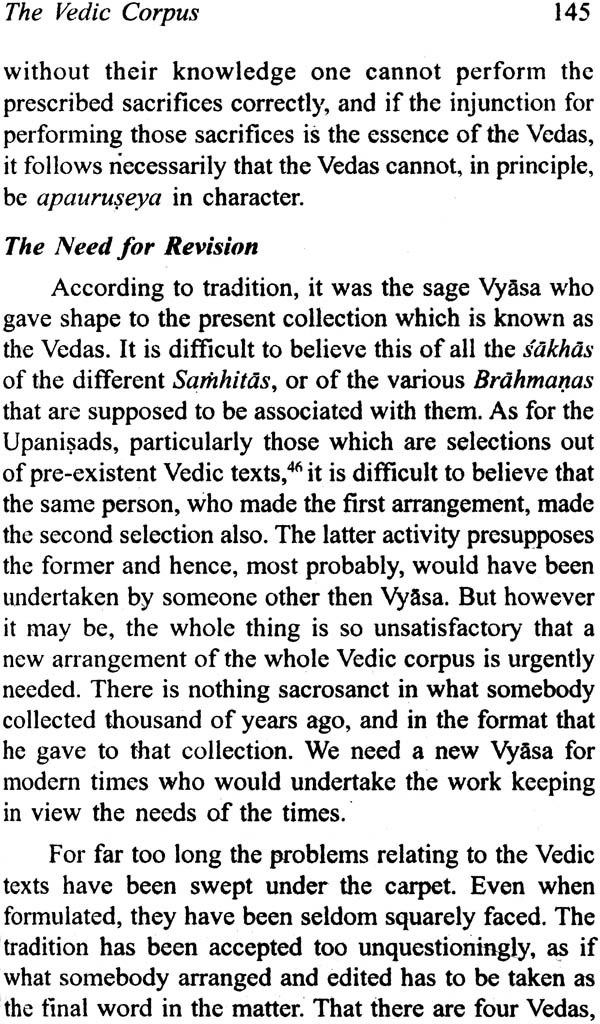
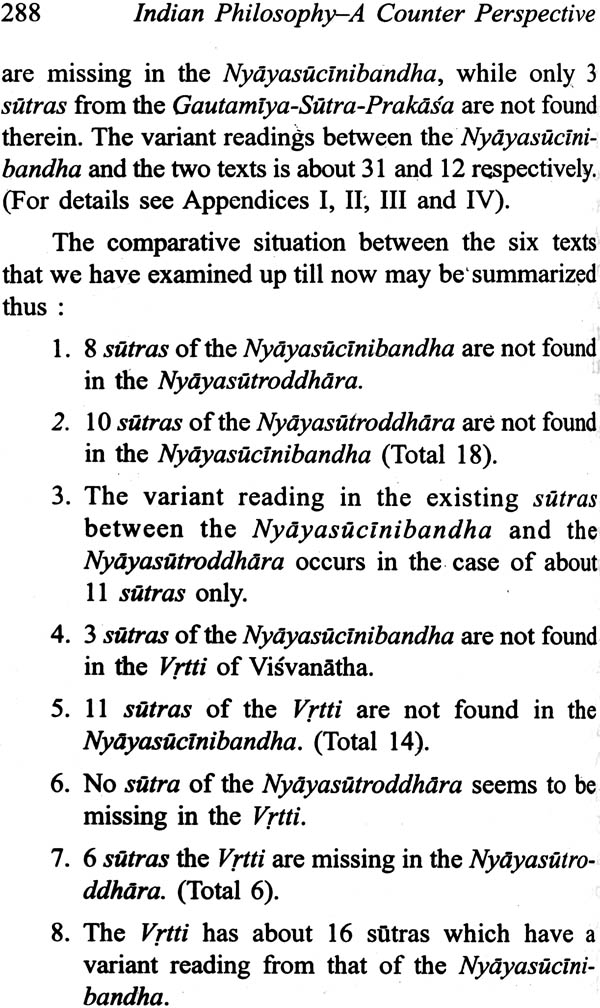
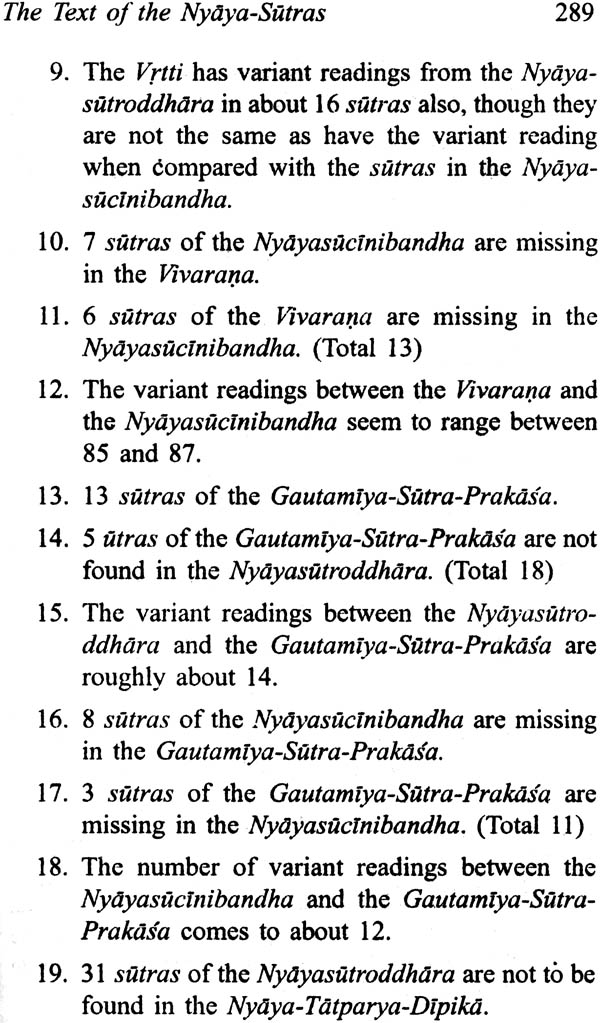
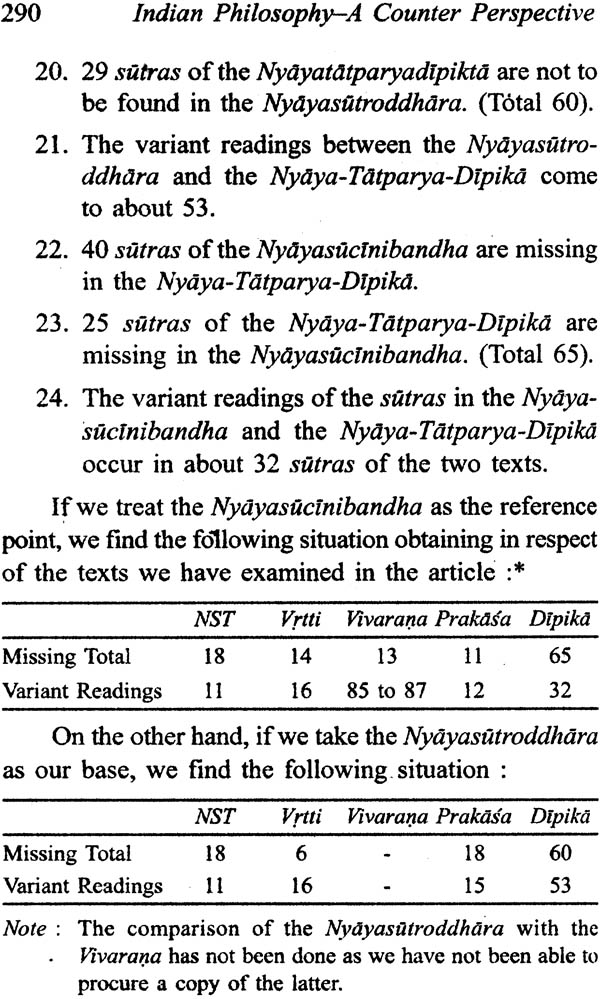
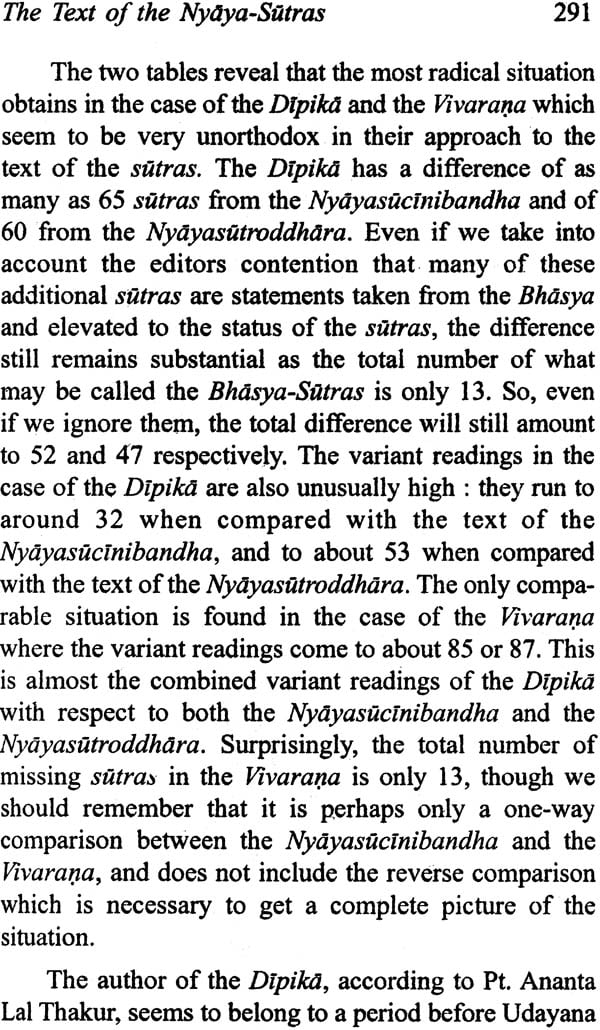
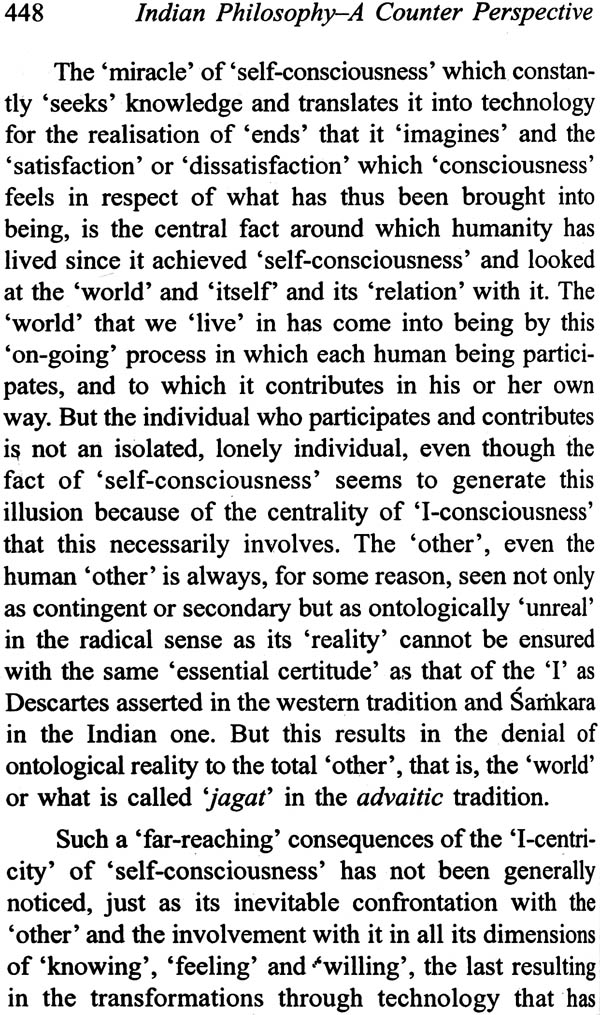
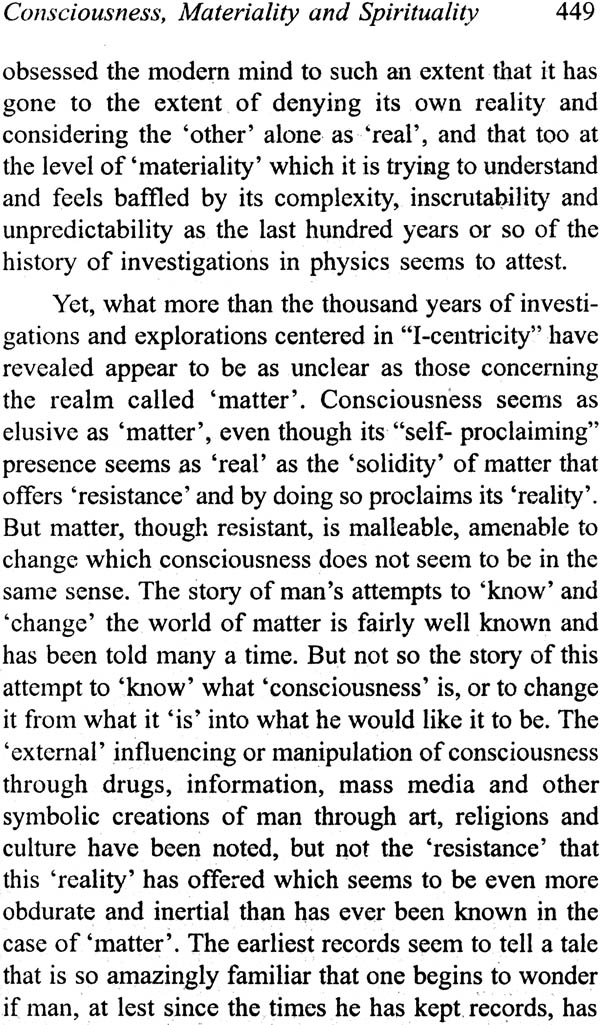
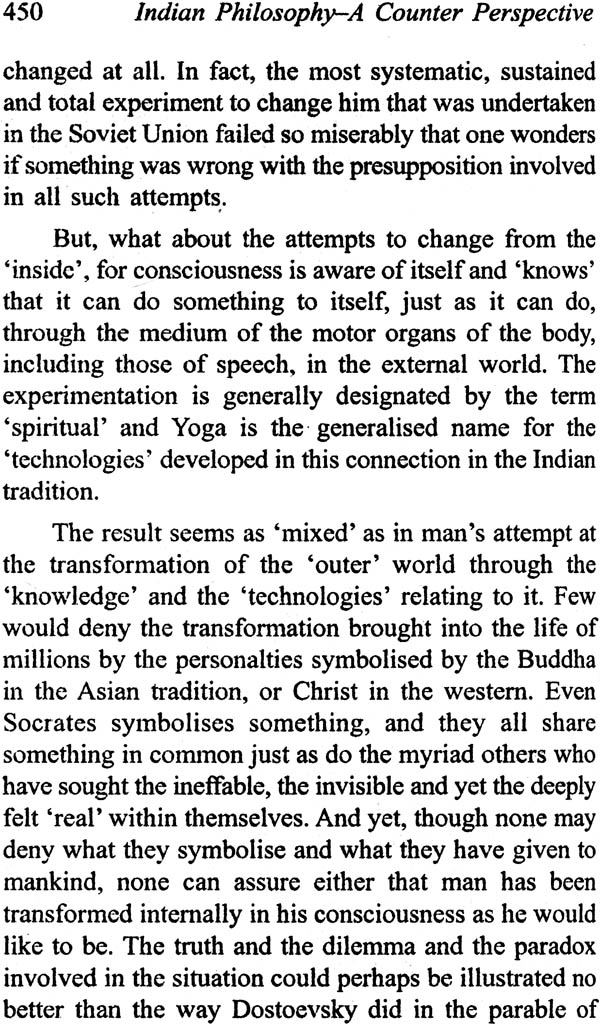
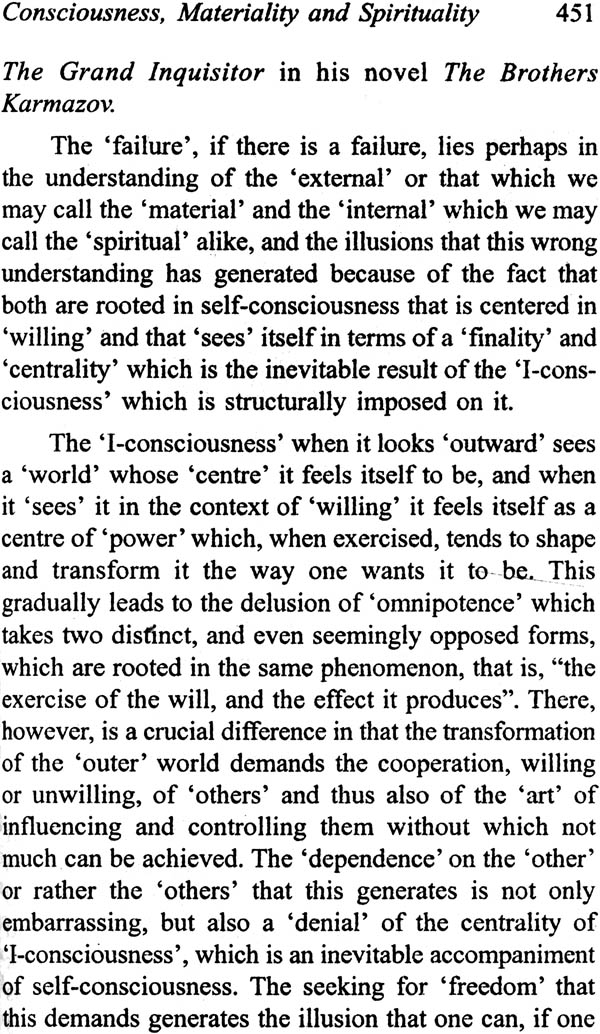
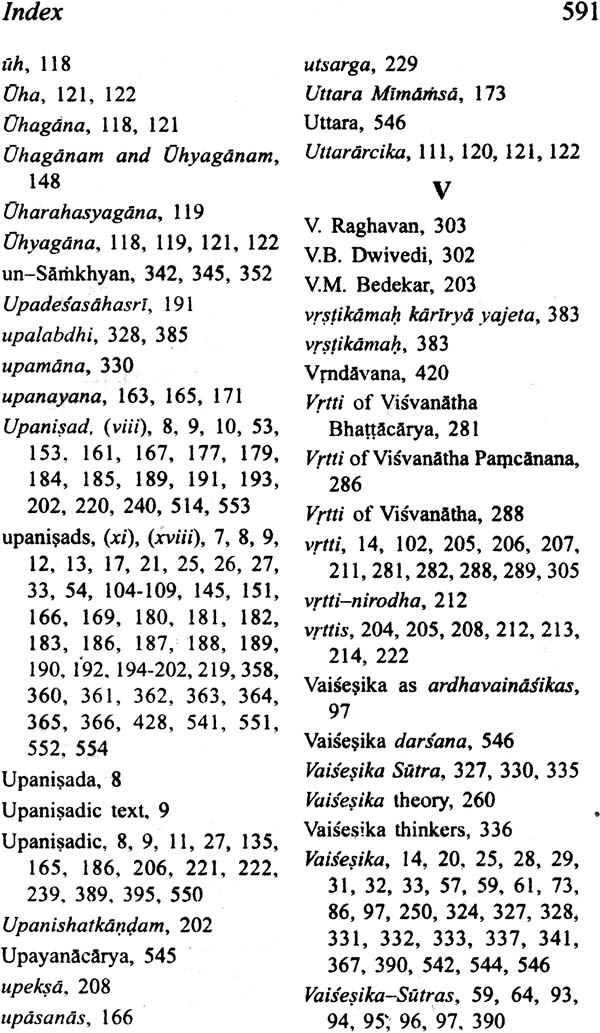

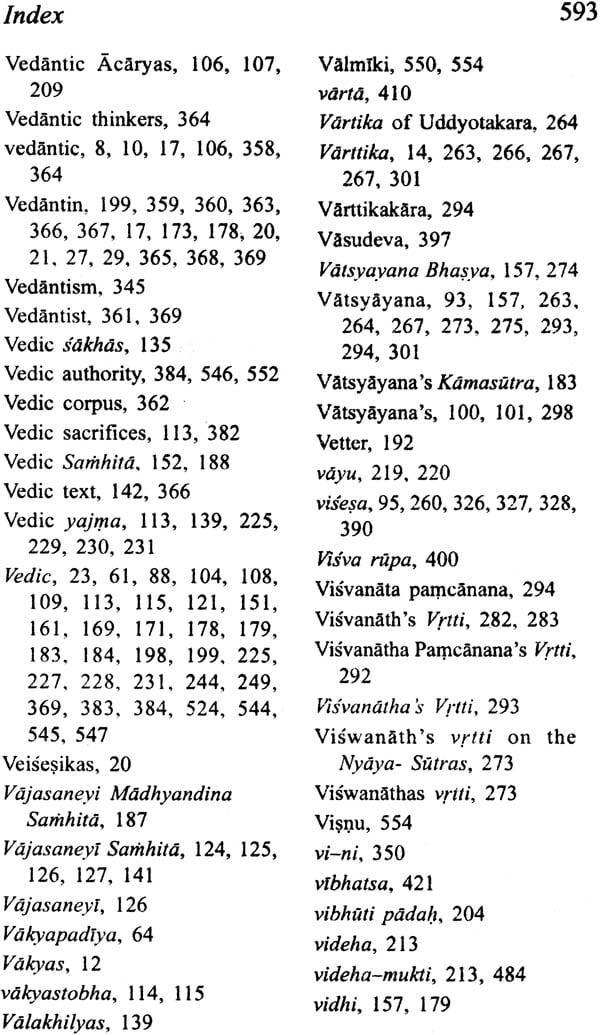
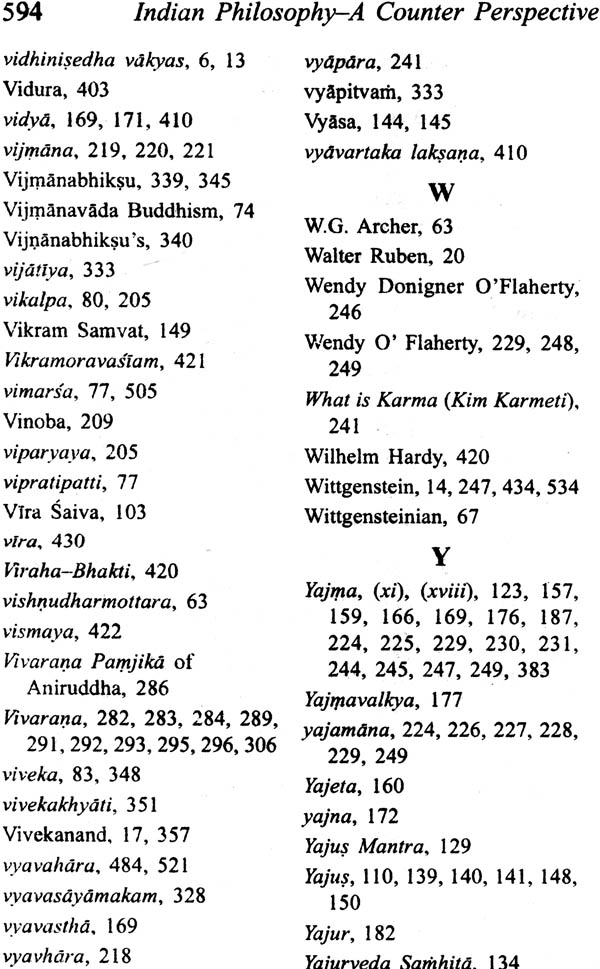
Send as free online greeting card
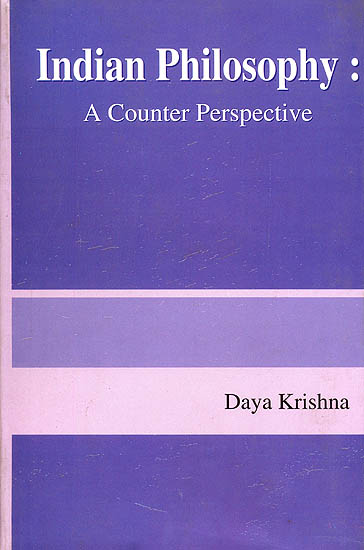
Visual Search